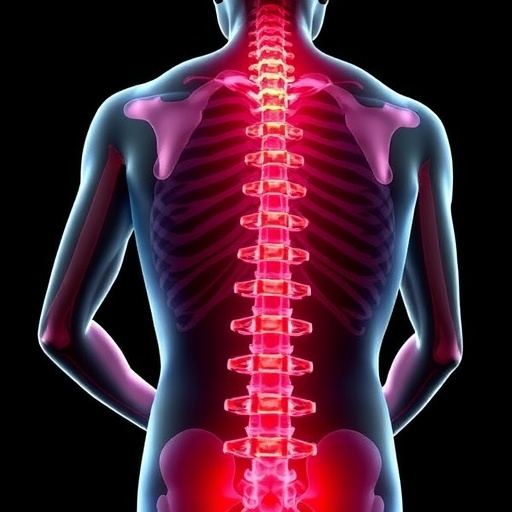When Everyday Life Is Ruled by the Urge to Urinate: Breaking the Silence on Prostate Health
Prostate health remains one of the most overlooked and under-discussed aspects of men’s wellness, despite its profound impact on quality of life as men age. A revealing new survey conducted by Orlando Health uncovers a striking truth: over a third of men would rather endure frustrating scenarios like being stuck in traffic or watching their favorite team lose than openly discuss their prostate health. This widespread avoidance not only perpetuates stigma but also delays diagnosis and treatment of common yet critical conditions such as benign prostatic hyperplasia (BPH), commonly known as an enlarged prostate.
The prostate gland, wrapping intimately around the urethra, naturally tends to increase in size with advancing age due to genetic factors and hormonal influences—particularly the shifts in testosterone and dihydrotestosterone levels. This enlargement compresses the urethra, leading to urinary symptoms ranging from increased frequency, urgency, trouble starting urination, to nocturia—waking two or more times per night to urinate. These symptoms are not merely inconveniences; they can severely disrupt sleep, work productivity, social interactions, and overall wellbeing.
Dr. Jay Amin, a urologist at Orlando Health, emphasizes the gravity of these symptoms, which often prompt men to resort first to lifestyle modifications or pharmacological treatments. However, many medications provide only temporary relief and may come with unwanted side effects. Recognizing this gap in effective long-term care, the urology field has advanced to offer minimally invasive surgical options such as Holmium Laser Enucleation of the Prostate (HoLEP), a procedure showing remarkable results in symptom resolution.
HoLEP represents a significant technological leap in prostate surgery. It employs holmium laser technology inserted through the urethra, avoiding incisions and minimizing postoperative pain and recovery time. This laser precisely removes the obstructing prostate tissue, relieving urethral compression. Patients typically experience minimal discomfort, mostly related to the urinary catheter used temporarily, which is generally removed within 24 hours after surgery. Return to light activities often occurs within a week, with full resumption of routine physical exercise possible by three weeks post-procedure.
The efficacy of HoLEP is underscored by its durability; recurrence rates are remarkably low, with only about 1% of patients needing repeat intervention even after two decades. This contrasts sharply with traditional surgical approaches or ongoing medical therapies that often require retreatment. Dr. Amin highlights the satisfaction he receives from performing HoLEP, narrating cases where patients who were once catheter-dependent regain spontaneous urination, dramatically restoring their quality of life.
One compelling case is that of Chris Golden, a 50-year-old marathon runner whose escalating urinary symptoms once threatened to undermine his active lifestyle. Despite adopting healthier habits like reducing soda intake to prevent bladder irritation, Chris was frequently preoccupied with finding restrooms, affecting his daily routines and sleep patterns. The silence often surrounding male urinary symptoms delayed his seeking medical advice until a referral to Dr. Amin led to diagnosis and timely surgical intervention.
Following his HoLEP procedure, Chris experienced a rapid and profound transition back to normalcy, with urinary stream restored to its youthful vigor and urgency sensations substantially diminished. His return to running and routine activities illustrates the broader message doctors advocate: men should overcome societal taboos, confronting urinary symptoms early to avoid long-term complications and preserve active lives.
Indeed, the hesitancy to discuss prostate health among men aged 40 to 80 years and beyond remains an obstacle in early intervention. Barriers include embarrassment, misconceptions about aging, and lack of awareness regarding modern diagnostic and treatment options. By bringing prostate health into the public conversation, medical professionals hope to foster earlier detection and more timely, effective care.
Advancements like HoLEP underscore how modern urology blends precision technology with minimally invasive surgical innovation to offer durable solutions for a problem affecting tens of millions of men worldwide. As the population ages globally, recognizing and addressing prostate enlargement bears increasing public health importance beyond just individual symptom management.
Orlando Health’s survey findings thus illuminate not only a psychosocial barrier but also a critical clinical gap. Addressing prostate health openly may prevent progression to complications such as urinary retention, recurrent infections, or kidney damage that result from untreated obstruction. Education initiatives that normalize discussion about urinary symptoms and promote routine screening could fundamentally improve men’s health outcomes.
As the evidence mounts for HoLEP and similar novel treatments, men suffering in silence have new reasons to seek help. The integration of such innovative procedures into standard clinical practice marks a paradigm shift from symptom palliation to durable resolution. Encouraging dialogue, disseminating scientific knowledge, and expanding access to advanced urological care comprise the pillars to lifting the burden that chronic prostate enlargement imposes.
In conclusion, the stigma shadowing prostate health hinders many men from accessing transformative therapies. The narrative needs to change—from enduring discomfort and inconvenience to embracing proactive care and rejuvenated health. Technologies like HoLEP affirm that complications once thought inevitable with age can now be effectively managed, enabling men to reclaim control over their daily rhythms and wellbeing.
For more detailed information or to schedule consultations, Orlando Health offers expert urological services utilizing cutting-edge techniques designed to enhance life quality for men facing prostate enlargement.
Subject of Research: People
Article Title: When Everyday Life Is Ruled by the Urge to Urinate: Breaking the Silence on Prostate Health
News Publication Date: November 4, 2025
Web References: https://www.orlandohealth.com/
Image Credits: Orlando Health
Keywords: Prostate cancer, Surgery, Mental health
Tags: addressing men’s health taboosbenign prostatic hyperplasia symptomseffects of testosterone on prostateimpact of aging on prostate healthimportance of early diagnosis in prostate conditionslifestyle choices and prostate healthmen’s wellness discussionsprostate health awarenessquality of life and prostate enlargementstigma surrounding prostate issuesurinary health in menurology health education





